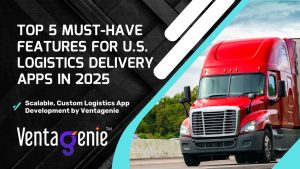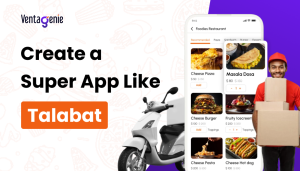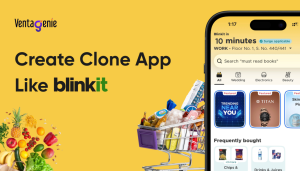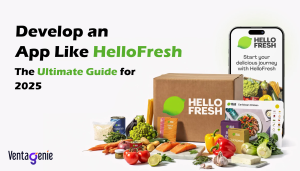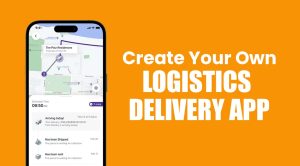The Subscription-Based Delivery Model: A Game Changer for Food, Grocery, Medicine, and Essential Services
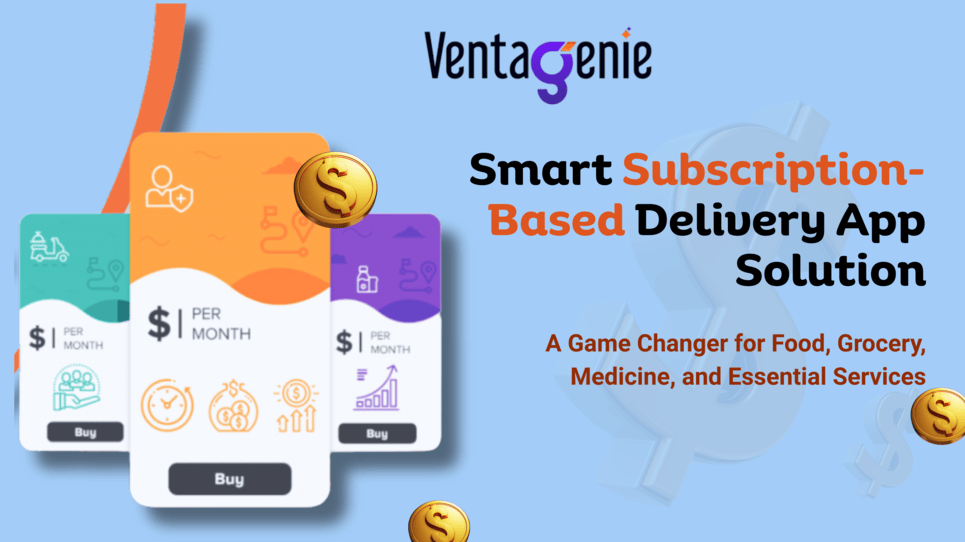
In the modern era of e-commerce, convenience is paramount. Consumers are looking for ways to save time and effort while maintaining high-quality access to the products and services they need. The subscription-based model has emerged as a solution to this demand, transforming industries across the board. Initially popular in media and entertainment, such as Netflix and Spotify, the subscription model has now expanded into critical sectors like food delivery, groceries, medicine, and daily essentials.
In this comprehensive guide, we’ll explore the subscription-based delivery app solutions, their working mechanisms, benefits for both businesses and consumers, and how they are revolutionizing the way we purchase essential goods.
What is a Subscription Business Model?
A subscription business model is a recurring revenue model where customers pay a fixed amount at regular intervals (monthly, quarterly, or annually) to access products or services. Instead of making one-time purchases, consumers enjoy continued access, fostering brand loyalty and predictability in revenue for businesses.
With the rise of e-commerce and digital transformation, the subscription model has evolved beyond media and entertainment services (e.g., Netflix, Spotify) to include essential services such as food, groceries, medicines, and daily necessities.
How Does the Subscription Business Model Work?
The subscription model operates through a simple and structured process:
- 1.Sign-Up & Subscription Selection :
Customers choose a suitable subscription plan (weekly, monthly, or annually) based on their needs.
- 2. Recurring Payment Setup :
Users provide payment details for automatic billing at regular intervals.
- 3. Personalization & Customization :
Some services allow customization based on dietary preferences, household needs, or medicine requirements.
- 4. Scheduled Delivery & Convenience :
Subscribers receive their chosen items on a pre-determined schedule without the need to reorder manually.
- 5. Flexibility & Cancellation :
Many subscription services offer pause, skip, or cancel options to accommodate users’ changing needs.
What is a Subscription-Based Delivery App Solution?
A subscription-based delivery app solution refers to a digital platform or application designed to automate and streamline the delivery process of goods or services that customers subscribe to. These apps simplify logistics and operational challenges by offering essential features like order automation, payment processing, real-time tracking, and route optimization. The goal of a subscription-based delivery app is to enhance the customer experience while reducing manual efforts and costs for the business.
These apps are crucial in industries such as food delivery, grocery services, and medicine, where customers rely on regular, recurring deliveries. By using a subscription-based delivery app, businesses can provide an efficient and scalable delivery system while fostering customer loyalty and satisfaction.
How Subscription-Based Delivery Apps Work?
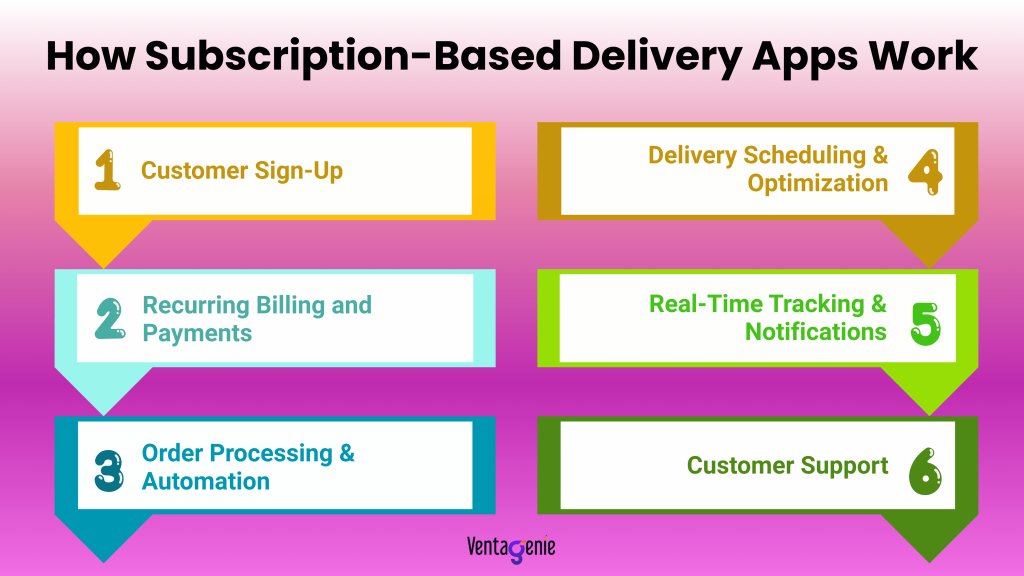
The functioning of a subscription-based delivery app involves several critical steps that ensure smooth operations for both businesses and consumers:
- 1. Customer Sign-Up :
The process begins with customers creating an account on the app and selecting a subscription plan. This can include meal kits, groceries, pet supplies, or even health and wellness products.
- 2. Recurring Billing and Payments :
Once a plan is selected, the app integrates payment gateways to allow for automatic recurring billing. Customers typically pay through digital wallets, credit cards, or other online payment methods.
- 3. Order Processing & Automation :
Based on the customer’s preferences, the app automatically processes and schedules orders at set intervals (weekly, bi-weekly, monthly). For instance, a customer subscribed to a weekly grocery delivery service will receive fresh groceries delivered automatically every week.
- 4. Delivery Scheduling & Optimization :
Delivery apps optimize routes to ensure that deliveries are completed efficiently. This reduces delivery time, saves fuel, and ensures on-time arrival.
- 5. Real-Time Tracking & Notifications:
The app provides live tracking features, enabling customers to monitor the status of their delivery. Customers are notified when their subscription order is dispatched, in transit, and upon arrival.
- 6. Customer Support:
Subscription-based delivery apps often include customer support features to handle inquiries, resolve issues related to product quality, delivery timing, or payment.
Types of Subscription Business Models and Examples

Subscription-based models vary depending on the nature of the business and customer needs. Below are the common types:
- 1. Replenishment Subscription Model:
- Automatically delivers essential goods that consumers use regularly.
- Examples: Amazon Subscribe & Save (groceries, household goods), Dollar Shave Club (razors), and Blinkit (daily groceries in India).
- 2.Curation Subscription Model
- Provides personalized or curated product selections, often focused on variety and discovery.
- Examples: Blue Apron (meal kits), Daily Harvest (smoothies & meals), and FabFitFun (lifestyle & beauty boxes)
- 3. Access Subscription Model
- Customers pay for exclusive access to products, discounts, or premium services.
- Examples: Instacart+ (free grocery delivery), Amazon Fresh, and CVS CarePass (medicine & health products).
- 4. Hybrid Subscription Model
- A combination of replenishment, curation, and access models.
- Examples: HelloFresh (meal kit delivery with personalized recommendations), Walmart+ (grocery & essentials with free delivery and member discounts).
Key Benefits of Subscription-Based Delivery App Solutions
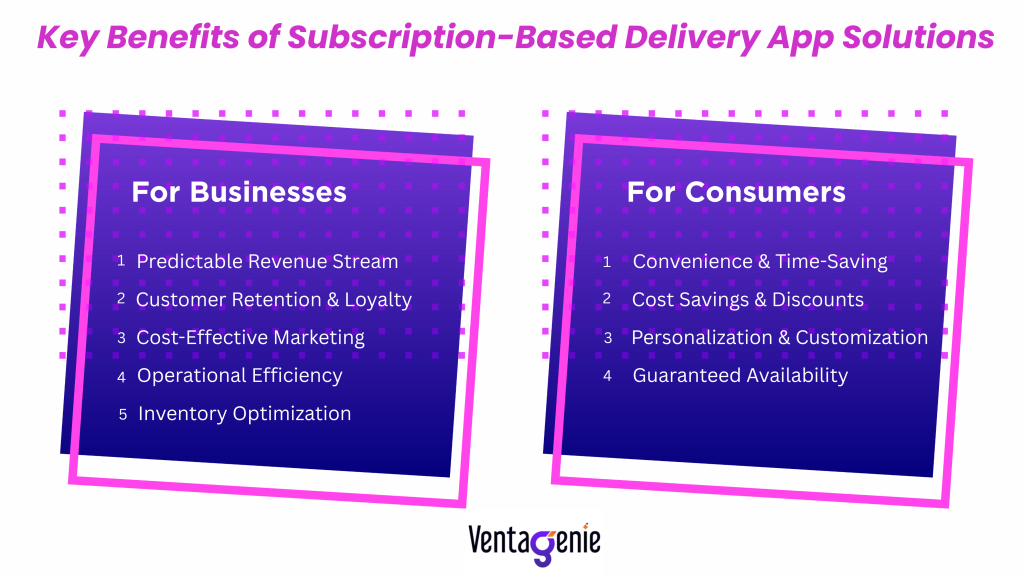
Subscription-based delivery apps provide numerous benefits for both businesses and consumers. Let’s explore these benefits in greater detail:
- For Businesses:
- Predictable Revenue Stream:
A subscription model ensures a stable, recurring revenue stream. Businesses can easily forecast their income and make informed decisions regarding product stocking, marketing, and expansion.
- Customer Retention & Loyalty:
Since customers subscribe for a longer duration, businesses can focus on retaining existing subscribers rather than constantly acquiring new ones. Loyalty programs, personalized services, and timely deliveries increase retention rates.
- Cost-Effective Marketing:
Subscription models reduce the cost per acquisition (CPA) as businesses do not need to repeatedly advertise to new customers. Retaining customers costs significantly less than acquiring them.
- Operational Efficiency:
Subscription-based delivery apps automate numerous processes, such as order fulfillment, payment collection, and delivery scheduling. This significantly reduces operational costs and human error, while boosting overall efficiency.
- Inventory Optimization:
With subscription-based apps, businesses can forecast demand more accurately. Predictable orders allow businesses to optimize their inventory, reducing waste and ensuring that customers always receive their products on time.
- For Consumers:
- Convenience & Time-Saving:
Consumers no longer need to place individual orders for essential products like groceries, pet supplies, or household items. Subscription-based delivery ensures regular, timely delivery, saving customers time and effort.
- Cost Savings & Discounts:
Subscription services often offer better pricing than one-time purchases, helping consumers save money. Businesses incentivize customers with exclusive discounts or lower per-unit costs for regular orders.
- Personalization & Customization:
Many subscription services provide tailored offerings. Whether it’s a meal kit customized to dietary preferences or a beauty box with products curated based on past preferences, the subscription model enhances personalization.
- Guaranteed Availability:
A major concern for customers is product availability, especially for items that are used daily. Subscription models remove this uncertainty, ensuring that subscribers always have access to essential goods.
The Future of On-Demand Monthly Subscription Services
With growing urbanization, digital adoption, and changing consumer behavior, subscription-based models are expected to dominate various industries.
Trends Shaping the Future:
- AI-Powered Personalization – Advanced AI and machine learning will refine product recommendations and predictive ordering.
- Blockchain for Transparent Supply Chain – Ensuring quality, safety, and authenticity in food, medicine, and grocery deliveries.
- Expanding to New Niches – Emerging sectors such as pet supplies, plant-based meals, and wellness supplements are entering the subscription space.
Key Features of Subscription-Based Delivery App Solutions
The benefits mentioned above are powered by several essential features that make subscription-based delivery app solutions effective for startups. Let’s look at the key features:
- Automated Recurring Orders:
One of the key features of subscription-based delivery apps is the ability to automate recurring orders. Once a customer subscribes, the system automatically processes their orders, schedules deliveries, and manages billing cycles. This significantly reduces manual input and allows startups to focus on other critical areas of the business.
- Real-Time Tracking and Notifications:
Real-time tracking helps both businesses and customers stay informed about the delivery status. Customers can track their orders directly through the app, and businesses can monitor the progress of deliveries. This feature reduces the workload on customer support teams by minimizing queries about delivery status.
- Smart Routing Algorithms:
Efficient route optimization is essential for timely deliveries. Subscription-based delivery apps use smart algorithms that factor in variables like traffic, weather, and delivery windows to determine the most efficient routes for each delivery. This ensures faster deliveries and minimizes delays.
- Data Analytics and Reporting:
Subscription-based delivery apps collect data on customer orders, preferences, and behavior. This data provides valuable insights that can help businesses:
- Forecast demand: Predict when customers are most likely to reorder or need additional products, allowing startups to better plan inventory.
- Optimize delivery schedules: Determine which products are most popular and adjust delivery frequencies accordingly.
- Improve marketing strategies: Segment customers based on their ordering habits to target them with personalized promotions.
- Payment and Billing Integration:
These apps also handle billing and invoicing, making it easier for startups to manage payments and subscription fees. Automated billing eliminates the need for manual invoicing and ensures that payments are processed on time.
Examples of Subscription-Based Models in Various Industries
- 1. Food & Meal Kits – HelloFresh, Blue Apron, Freshly:
Subscription-based food delivery services have gained popularity as more consumers seek convenient, healthy, and ready-to-cook or ready-to-eat options. These services cater to busy individuals who want to eat well without the hassle of grocery shopping or meal planning.
Example
- 1. HelloFresh:
HelloFresh delivers fresh, pre-portioned ingredients and recipes to your door. Subscribers can choose from a variety of meal plans that suit dietary preferences, such as vegetarian or family-friendly options.
Key Features:
- Customizable meal plans.
- Convenient delivery schedules.
- Sustainable packaging.
Business Benefits:
- Predictable revenue from recurring orders.
- Enhanced customer loyalty due to personalized meal choices.
- 2. Blue Apron:
Blue Apron offers customers a variety of meal options that are fresh, nutritious, and easy to cook. The service is designed to provide everything necessary for meal prep, from ingredients to step-by-step recipe cards.
Key Features:
- Flexible meal options for different family sizes.
- Sustainability initiatives.
- Customization based on dietary needs.
Business Benefits:
- Subscription models foster customer engagement.
- Data-driven insights for better meal recommendations.
- 3. Freshly:
Freshly focuses on delivering fully prepared meals that are ready to eat. Unlike traditional meal kits, Freshly eliminates the need for cooking, offering a hassle-free dining experience.
Key Features:
- No cooking required.
- Health-conscious meal options.
- Flexible delivery schedules.
Business Benefits:
- Increased revenue from regular, hassle-free deliveries.
- High customer retention rates due to the convenience of ready-made meals.
Automate and streamline your food business with ready-to-use food delivery app solution.
- 2. Grocery & Essentials – Amazon Fresh, Instacart+, Thrive Market
The grocery and essentials industry is also experiencing a transformation with subscription-based delivery services. These services allow consumers to get everyday items like food, toiletries, and cleaning products delivered to their door without having to make repeated purchases.
Example:
- 1. Amazon Fresh:
Amazon Fresh is a grocery delivery service that provides customers with fresh food, produce, and everyday essentials. It integrates with Amazon Prime for added convenience and cost savings.
Key Features:
- Wide selection of groceries, including fresh produce and pantry staples.
- Integration with Amazon Prime for faster deliveries and discounts.
- Flexible subscription plans for recurring orders.
Business Benefits:
- Predictable revenue from Prime members who subscribe to Amazon Fresh.
- Increased customer satisfaction through fast and reliable delivery.
- 2. Instacart+ :
Instacart offers a premium subscription called Instacart+, providing free delivery on grocery orders and exclusive discounts at participating stores.
Key Features:
- Free delivery on orders above a certain amount.
- Exclusive discounts and early access to sales.
- Partnership with multiple grocery retailers.
Business Benefits:
- Increased average order value due to free delivery and exclusive offers.
- Strong customer loyalty through membership perks.
- 3. Thrive Market:
Thrive Market is a membership-based service that delivers organic, non-GMO groceries at discounted prices. It targets health-conscious consumers who prioritize eco-friendly and sustainable products.
Key Features:
- Access to organic, sustainable products.
- Discounted prices for members.
- Free shipping on qualifying orders.
Business Benefits:
- Strong customer base due to health-conscious and sustainability-focused consumers.
- Predictable revenue from memberships.
Streamline Your Grocery Delivery Business Model With A Powerful Grocery Delivery System
- 3. Medicine & Health Products – CVS CarePass, PillPack by Amazon Pharmacy
Subscription-based delivery models are also making waves in the healthcare sector, with services offering medication deliveries, health products, and wellness subscriptions directly to consumers’ doors.
- 1.CVS CarePass:
CVS CarePass offers a subscription service that includes free prescription delivery, exclusive discounts, and other pharmacy-related benefits.
Key Features:
- Free prescription delivery.
- 20% off CVS health and wellness products.
- Exclusive discounts and promotions for members.
Business Benefits:
- Enhanced customer loyalty due to the convenience of prescription deliveries.
- Increased membership renewals due to cost savings on health products.
- 2. PillPack by Amazon Pharmacy:
PillPack delivers prescription medications to consumers in pre-sorted doses, making it easier for individuals who take multiple medications to stay on track.
Key Features:
- Pre-sorted medications for easy dosing.
- Automatic refills and reminders.
- Integration with Amazon’s pharmacy platform.
Business Benefits:
- Recurring subscription revenue from customers’ ongoing medication needs.
- Increased customer retention due to the convenience of automatic refills.
Enhance your medicine delivery business with our ready-to-deploy medicine delivery app solution.
- 4. Beverages – Nespresso Coffee , Coca-Cola Freestyle Subscription:
The beverage industry has also embraced the subscription model, offering consumers regular deliveries of coffee, soda, and other drinks.
- 1. Nespresso Coffee Subscriptions:
Nespresso offers a subscription service where customers receive regular deliveries of their favorite coffee pods.
Key Features:
- Flexible delivery options (weekly, monthly).
- Access to exclusive coffee blends.
- Personalized coffee recommendations.
Business Benefits:
- High customer retention due to regular coffee deliveries.
- Increased revenue from subscriptions and personalized offerings.
- 2. Coca-Cola Freestyle Subscription:
Coca-Cola’s Freestyle machine subscription allows customers to enjoy unlimited beverages from a wide range of Coke products.
Key Features:
- Unlimited drinks from a variety of Coke beverages.
- Personalized drink choices.
- Exclusive access to new beverages.
Business Benefits:
- Recurring subscription revenue from unlimited beverage access.
- Increased customer consumption and engagement with Coca-Cola products.
Challenges of Subscription-Based Delivery App Solutions
While subscription-based delivery models are effective, they come with their own set of challenges that businesses must address:
- 1. Customer Churn:
Subscription services rely heavily on retaining customers. If customers do not see enough value in the subscription, they may cancel. Businesses must continually engage with customers, offering incentives, personalized offerings, and quality service to reduce churn.
- 2. Inventory and Supply Chain Management:
Managing inventory for subscription-based services can be difficult, particularly when there are seasonal changes or unpredictable demand. Businesses need robust inventory management systems to ensure they can meet demand while minimizing waste.
- 3. Logistical Complexity:
Managing timely deliveries, particularly when dealing with perishable goods like groceries or meals, requires efficient logistics. Subscription-based delivery services need to invest in efficient systems to ensure that orders are fulfilled on time and that quality is maintained.
- 4. Upfront Investment:
For startups or new businesses, implementing a subscription-based delivery app solution requires significant upfront investment in technology infrastructure, app development, and marketing to acquire subscribers. This can be a barrier to entry for smaller businesses.
Conclusion:
The subscription-based delivery model has revolutionized how businesses and consumers interact with essential goods. By offering convenience, cost savings, and personalized services, subscription-based delivery apps are reshaping industries such as food, grocery, medicine, and more.
For businesses, the subscription model provides predictable revenue streams, operational efficiency, and customer loyalty. Meanwhile, for consumers, the model offers convenience, savings, and a more tailored shopping experience.
As the world continues to embrace digital transformation, subscription-based delivery app solutions will become increasingly central to business strategies across industries. Whether you’re a startup looking to enter this space or a well-established company looking to expand your offerings, embracing the subscription model is a smart move that promises long-term benefits.
At Ventagenie, we are experts in subscription-based delivery app development. Whether you are launching a new service or enhancing an existing one, our solutions are designed to fit your business needs, providing scalable, efficient, and customer-centric solutions that drive growth and ensure long-term success.
Ready to launch your subscription-based delivery service?
Explore innovative solutions tailored for your business needs and tap into the booming subscription economy today!
Frequently Asked Questions (FAQs)
A subscription-based delivery app allows businesses to offer regular deliveries of products or services to customers who pay a recurring fee. The app automates the order, payment, and delivery process, offering convenience and cost savings.
Customers subscribe to a service, choosing a plan (weekly, monthly, or annual) and set up recurring payments. The app automatically processes orders and delivers products or services on a predetermined schedule.
For businesses, it offers predictable revenue, customer loyalty, and operational efficiency. For consumers, it ensures convenience, cost savings, and personalized services.
Yes, most subscription services allow customers to pause, skip, or cancel their subscriptions at any time, offering flexibility to suit changing needs.
Yes, subscription-based delivery apps are flexible and can be tailored to a wide range of industries, including food, groceries, medicine, pet supplies, beauty products, and more.
Ventagenie specializes in developing tailored subscription-based delivery app solutions that help businesses optimize operations, improve customer experience, and grow revenue. Contact us to learn more about how we can help you build the perfect solution for your business!
Mr. Aniket D is a seasoned digital marketer with over 10 years of experience in market research, content strategy, and performance marketing.
He specializes in analyzing consumer behavior, identifying emerging market trends, and translating insights into actionable digital strategies.
His work focuses on blending research-driven content with SEO and lead generation to drive measurable business growth.
Known for his data-first mindset, Aniket helps brands make smarter, audience-focused decisions in competitive markets.

